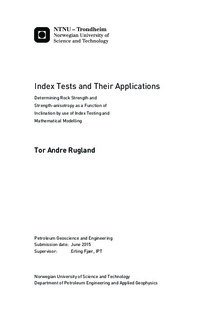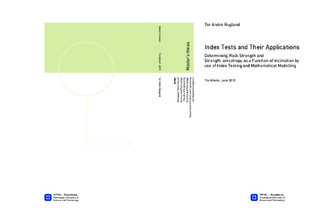| dc.description.abstract | Drilling problems in shale continue to be an expensive problem in the petroleum industry due to lack of information concerning rock mechanical parameters. Conventional laboratory tests are expensive and time consuming, as shale is a difficult material to test. Index testing on shale material is an easy, in-expensive and effective alternative. Index testing has previously been performed in order to obtain this information, but the truth is that more testing have been needed in order to fully understand the value of these tests. This thesis has enhanced the knowledge and application area for some of the index tests. Four index tests, respectively CWT, Shale Puncher, Scratch Test and Brazilian Test, has been investigated and compared to both modeled data with the patchy weakness model and other published results. A wide collection of data has been used in order to enhance the understanding of these tests.
In general measured results correlate well with expected theoretical results. Also the UCS estimations from the index tests correlate with other UCS data. A large comparison of strength data shows that a solid estimation with respect to UCS may be determined by use of the index tests presented. By looking at maximum and minimum readings of presented results, and strength as a function of inclination, degree of strength anisotropy may be determined. Index testing has also proved to provide information concerning heterogeneity.
Index test results confirm previous published findings, but some deviations are seen for the interpretation of punch results due to geometrical difficulties. Also the area of application of the scratch test is investigated, and a unique finding is presented where strength anisotropy may be determined as a function of scratch direction.
Overall this thesis contributes with important discussion and results regarding shale mechanical parameters and strength anisotropy. | |

